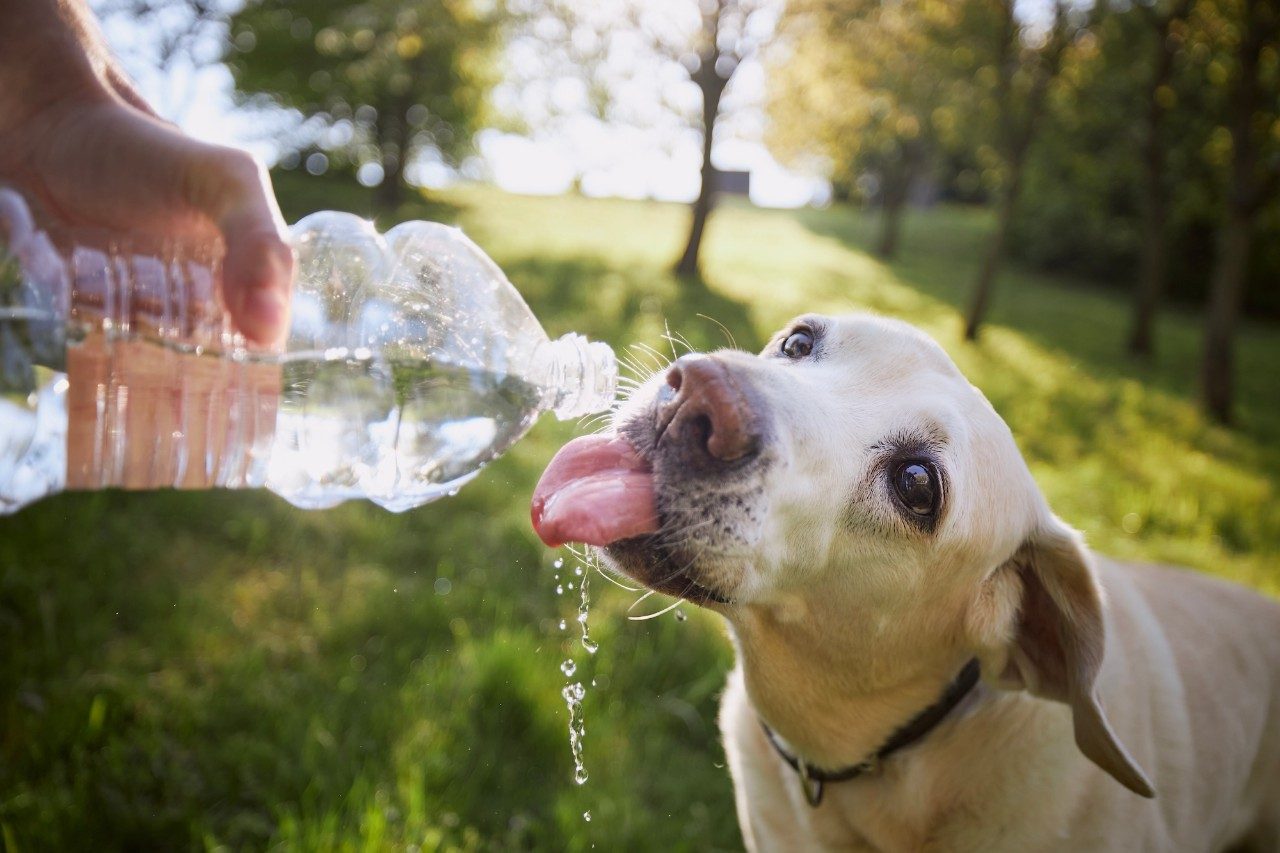Pets can’t speak up and tell their owners that they’re getting overheated, so as temperatures warm up, it’s important that pet owners are aware of heatstroke (a condition caused by the body overheating).
Heatstroke is a medical emergency; if you think your pet is suffering from an elevated body temperature, seek veterinary care with your primary veterinarian or a veterinary emergency service immediately.
What Is heatstroke?
Heatstroke happens when a hot environment increases your pet’s body temperature. Heatstroke occurs when a cat or dog’s body temperature spikes over 105.8 degrees.
Some signs of heat stroke include:
- Hot to the touch (especially on the top of the head)
- Inability to stand or walk
The increased body temperature begins to wreak havoc on almost all of your pet’s body systems. Heatstroke interrupts your pet’s normal physiological functions like circulation and digestion, and it can result in multiple organ failure. Serious heat damage to your pet’s body can result in seizures, coma, damage to the liver and gastrointestinal tract, kidney failure, and shock.
What should I do if my pet has heatstroke?
First, remove the animal from the heat: bring your pet inside or under the shade. Next, take your pet to the veterinarian as soon as possible.
In the meantime, you can use soaking wet towels, or room temperature water such as tap water to cool off your pet’s head and body. Place your pet in front of a fan or other form of moving air such as an air conditioner to help your pet cool down. Do not let active cooling efforts delay travel to your nearest veterinary support. NEVER submerge your pet in ice or cold water, as this can lead to shock. Water should be room temperature or cool when applied to your pet’s body.
There are several ways your veterinarian might treat heatstroke, depending on the severity of your pet’s condition:
- Providing fluids, either intravenously or subcutaneously
- Administering medications to support your pet’s gastrointestinal tract and heart
- Monitoring closely or hospitalization, depending on the severity of their condition
- Run tests to assess organ damage and function
Causes of heatstroke in pets
Heat, humidity, and a lack of ventilation causes heatstroke in pets. A lack of access to shade or water can make the problem worse. Cars are particularly dangerous — cars trap heat inside of them like greenhouses, and the temperature in a parked car can jump dozens of degrees even on a relatively cool day.
We typically think of heatstroke as affecting dogs, but cats can get heatstroke, too. Like dogs, cats have sweat glands between their paw pads, but unlike dogs, they do not tend to pant to cool down. In cats, panting is a sign of stress or overheating.
Some dogs (like those with short snouts) can become overheated from excitement or stress, even on days that aren’t particularly hot. Pets with short snouts, thicker coats, and obesity are more likely to get heatstroke because it is more difficult to regulate body temperature. Dogs who are not acclimated to a warm environment might get a type of heatstroke called exertional heatstroke while exercising.
Heatstroke is a serious problem. As summer arrives and temperatures start to rise, make sure that your pet has access to shade and water — and make sure they are not left in a hot car. Avoid walking your dog during peak temperatures, instead choosing early morning or late afternoon. Exercise can increase core body temperature and also lead to heatstroke during elevated temperatures in the environment.
By Sarah Boudreau




